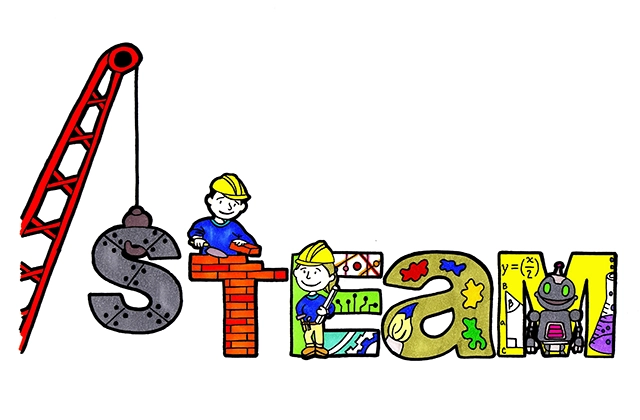What is STEAM Education and why is it Important for your Child

Why It's Crucial for Your Child's Future
In recent years, "STEAM Education" has become a major buzzword, almost a new global movement in education. Many parents are curious, and perhaps a little anxious: What exactly is this highly-touted concept? Is it truly empowering for our children's future, or just a passing trend?
Today, let's take a deep dive into the core of STEAM education and explore why it holds such importance.
I. What Exactly is STEAM?
To understand STEAM, we first need to look at its predecessor, STEM.
- STEM is an acronym for Science, Technology, Engineering, and Mathematics. It's far more than just a list of subjects; it's an interdisciplinary approach that emphasizes integration and application to cultivate versatile problem-solvers.
- STEAM builds upon this foundation by integrating "A" for Arts. The inclusion of the arts is not merely about painting or drawing; it infuses the rigor of STEM with the creativity, design, and human-centric perspective of the arts. This covers design, aesthetics, imagination, and empathy, ensuring that technological innovation is not only powerful but also purposeful and well-designed.
In short, STEAM education aims to cultivate the next generation of innovators who are as proficient in scientific logic as they are in the arts and humanities.

Children can learn by working together
II. Why is STEAM Education So Important?
In today's world, the way we acquire knowledge has fundamentally changed. Rote memorization and repetitive tasks are rapidly losing their value. The importance of STEAM lies in its focus on developing the core competencies that are most in-demand for the future.
1. Fostering True Critical Thinking
STEAM education moves away from "spoon-feeding" information. It encourages children to face open-ended problems and actively seek solutions. Through a cycle of trial, error, and reflection, children learn more than just facts—they develop independent thought and logical reasoning.
2. Igniting Creativity and Imagination
When technology meets art, creativity flourishes. STEAM projects often challenge students to achieve goals with limited resources, compelling them to "think outside the box" and devise novel solutions. This ability is key to navigating the uncertainties of the future.
3. Strengthening Communication and Collaboration
Nearly all significant achievements in modern society are the result of teamwork. In STEAM projects, children must communicate complex ideas, listen to and understand different perspectives, and work together to achieve a common goal. These are indispensable soft skills for any future career.
4. Emphasizing Hands-on Learning and Making it Fun
The core appeal of STEAM is "learning by doing." Children build, code, and experiment with their own hands, transforming abstract theories into tangible results. The sense of accomplishment from this process is the best catalyst for igniting a passion for learning and fostering lifelong learners.

Children can develop diverse skills
III. A Look to the Future: STEAM and Career Prospects
From a practical standpoint, STEAM education lays a solid foundation for a child's future career path. The global demand for STEAM talent is growing at an unprecedented rate.
- Vast Career Opportunities: Data shows that of the global demand for STEAM jobs, the computing field alone accounts for 71%. From artificial intelligence and big data to life sciences, these cutting-edge fields urgently need professionals with interdisciplinary skills.
- A Higher Career Starting Point: Studies indicate that graduates in STEAM-related fields typically have significantly higher starting salaries and more job opportunities than their peers in non-STEAM fields.
- Future-Proof Skills: In the age of AI, many repetitive jobs face the risk of automation. However, the creativity, complex problem-solving skills, and collaborative abilities nurtured by STEAM are difficult for machines to replicate, giving your child an "irreplaceable" competitive edge.
IV. How to Begin Your Child's STEAM Journey?
While the benefits of STEAM are clear, traditional school settings are often limited by curriculum time and resources, making comprehensive implementation a challenge. This makes supplemental learning and practice outside the classroom particularly valuable.
Choosing a suitable STEAM project or kit for your child is an excellent way to spark their interest. When children witness their own ideas come to life through fun, hands-on activities, the seeds of curiosity and creation are sown.
Wondering how to select the right learning tools to help your child take that crucial first step? The article below may offer some valuable guidance.
How to Choose the Best Programming and STEAM Kits for Kids?
From beginner to advanced, this article provides a systematic overview of excellent programming tools for children, helping you make the wisest choice based on your child's age and interests to effectively launch their STEAM learning journey.
Check our Starter Kits